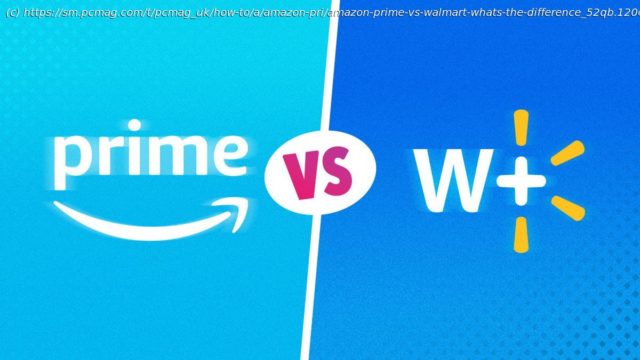Walmart+ or Amazon Prime: Which is the better subscription service? Here’s what each one brings to the table, from free shipping and video streaming to grocery delivery.
Amazon is synonymous with online shopping; as of October 2021, it had 41% share of the US retail e-commerce market, according to Statista, thanks in large part to its popular Amazon Prime subscription service, which now has more than 200 million members. In the No.2 spot is Walmart with 6.6% of the market. Its Prime rival, Walmart+, launched in 2020 after the expensive failure of its $3 billion investment in Jet.com. But while it’s the market share underdog, Walmart is a retail behemoth in its own right, and attracted an estimated 32 million Walmart+ members in one year. If you’re a regular online shopper, from home goods to groceries, which service is best for you? Here’s a rundown of the differences between Amazon Prime and Walmart+. How Much Do Amazon Prime and Walmart+ Cost? Walmart+ will run you $12.95 per month or $98 per year. Amazon Prime costs $14.99 per month or $139 per year. Prime just got a price hike—its first in four years—from $12.99 per month and $119 per year. Both services offer a 30-day free trial. Amazon has several discount versions of Prime, like Amazon Student, which offers a free six-month trial, after which it’s $59 per year or $6.49 per month for four years or until graduation, whatever comes first. Amazon Student perks are much the same as Prime, and Amazon recently threw in discounts to services like Grubhub+ Student, Calm, StudentUniverse, and Course Hero. Those with a valid Electronic Benefits Transfer (EBT) or Medicaid card, can also sign up for Amazon Prime for $5.99 per month for up to four years. And Amazon lets you share Prime benefits with one other adult member of your household, plus up to four kids under the same roof. Walmart+ does not currently have any special student or family pricing plans. Delivery Services Initially, the main draw of Amazon Prime was free, two-day delivery. Free is relative given that you’re now paying at least $139 per year (up from $79 back in the day), but over the years, Amazon has added a number of delivery-related perks to Prime. Amazon now offers one-day delivery on over 10 million items, for example. Filter by “Get it tomorrow” when shopping and it’ll arrive by 9 p.m. the next day. Depending on where you live, orders over $35 also qualify for free, same-day delivery. And if you’re ordering groceries from Amazon Fresh (or Whole Foods), Prime members can choose a free, two-hour delivery window. Ordering multiple things every week? Amazon lets Prime members pick a “delivery day” to get your packages delivered all at once. Walmart offers free, two-day shipping on orders of $35 or more for all customers. With Walmart+, there’s no $35 minimum on next-day, two-day, and standard shipping. The catch: This does not apply to third-party sellers, so look for the Sold and shipped by Walmart.com label on product pages. (Click All Filters > Retailer on a results page and check the box next to Walmart.) If you live near a Walmart store, you can have groceries and other items delivered to your home in a one-hour window. Here, there is a $35 minimum for free delivery ($5.99 if it’s under $35). If grocery or same-day delivery is the deciding factor when choosing between Walmart and Amazon, go to each company’s website and make sure they deliver to your home. (Select Reserve pickup or delivery on Walmart.com or click Deliver to on the top-left of Amazon.com.) Walmart, for example, doesn’t currently do grocery delivery in New York City, but Amazon Fresh does.






